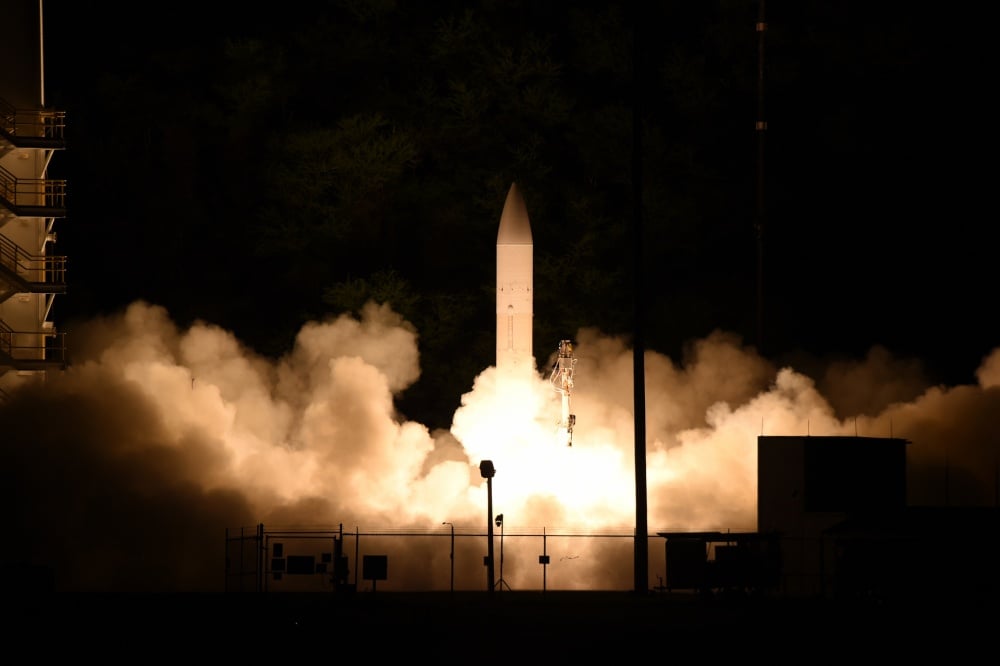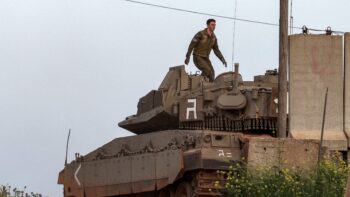
Launch of Army-Navy Common-Hypersonic Glide Body (C-HGB) in Hawaii on March 19, 2020.
WASHINGTON: The US Army is steadily progressing with its Long Range Hypersonic Weapon (LRHW) prototype, to the point the service plans to start training operations staff on ground-based equipment by mid October, says Bob Strider, deputy direction of the Army Hypersonic Project Office.
“We are moving very rapidly toward getting this capability put in place,” he told the annual Space and Missile Defense Symposium on Tuesday. “We’re very, very confident that we’re going to meet our 2023 fielding date.”
To be clear, the hypersonic weapon itself won’t be fielded until that 2023 target. But the service is moving forward with installing all the ground equipment needed to make the LRHW, newly dubbed the Dark Eagle, operate successfully. Strider said that equipment should be in place at the currently undisclosed deployment location in September.
The system includes the hypersonic missile itself, the mobile launchers (called Transporter Erector Launchers, or TELS) and a mobile command and control (C2), according to Strider’s slides.
“It’s going to be a battery of four launchers, two missiles per for basic load of eight,” he explained. “It’s going to be a Battery Operations Center — that’s our C2 system that is based against an AFATDS, the [Advanced] Field Artillery Tactical Data System …. with a support vehicle,” he explained. “This will be a road mobile system, which is critical, the ability to move around the battlefield.”
The ground equipment will allow the unit to begin training, including loading and offloading practice canisters from C-130 transport aircraft, Strider explained. It also will lay the ground work for upcoming Joint Flight Tests (JFTs) done in coordination with the Navy, and with observers from the Missile Defense Agency.
The first operationally configured JFT will take place in early in fiscal 2022; the second, using a TEL, in fourth quarter 2022; and the third — which Strider called the “graduation event,” in which the unit will independently “fly in, they will set up, they will launch, and redeploy back to home base” — in early fiscal 2023.
Notably, Strider did not say is which unit will be the lucky one to get the first Dark Eagle prototype. Given, however, the the LRHW is very much aimed at deterring peer competitors China and Russia, one might rationally guess that the unit likely will be based in the Indo-Pacific or European theater.
As Breaking Defense was first to report back in May, the LRHW provides a capability at a distance greater than 2,775 km, or about 1,725 miles. That means if the missiles were based on US soil in Guam, they could still strike Chinese troops besieging Taipei.
“You know we’re number three in this race,” Strider stressed, “and we’ve got to catch up.”
To the end of speeding the program, he said, the Army’s Rapid Capabilities and Critical Technologies Office (RCCTO) has “embedded” a transition team from the Program Executive Office (PEO) Missiles and Space into Strider’s hypersonic project office. RCCTO is responsible for development of prototypes for both offensive hypersonic missiles and missile defense lasers. The PEO is responsible for weapons procurement, or programs of record.
The transition of Dark Eagle from a prototype development to a program of record is slated for fiscal 2023, Strider said. Further, the two teams already are working together to craft a budget submission for fiscal 2024 through 2028.
The Army and Navy are partners in the development of the missile’s core, the Common Hypersonic Glide Body. The difference is in how the two services launch, Strider explained.
“The Army does everything hot launch; the Navy does what’s called a cold launch, where they eject it out and then they light the booster after it’s ejected from the canister,” he said.






















